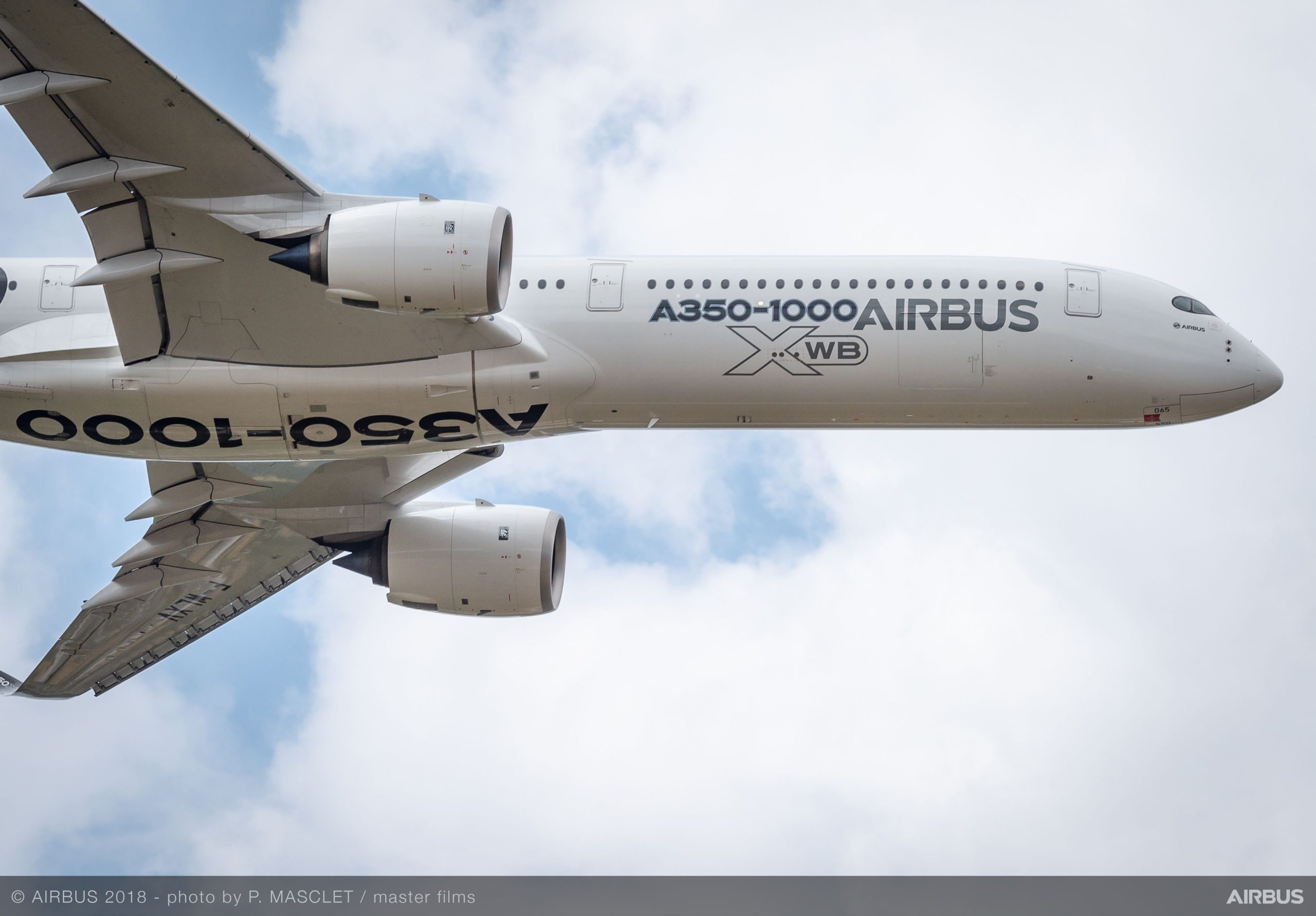
With the A380 about to leave the stage by late 2021, Airbus has got itself a new high-capacity seat airliner. On November 27, the A350-1000 has been certified by the European Union Safety Agency (EASA) to operate with 480 seats, up from the previous maximum of 440. Will this attract new customers?
The 480-seater comes with some modifications, the most important ones those to a different kind of evacuation slide. All eight doors (four on each side) have to be of the A+ model and have to be equipped with dual lane slide rafts that should increase the speed of an evacuation.
Also different is the maximum number of passengers that can sit in the all 10-abreast cabin within the cabin segments. The segment between Doors 1 and 2 was limited to 110 but now goes up to 120. Between Doors 2 and 3, this changes from 177 to 180, but the biggest increase in capacity is between Doors 3 and 4 from 153 to 180 seats. Sub-versions with different seating arrangements between Doors 2-3 and 3-4 are also possible.
Another requirement in the highest-density configuration is that the minimum number of cabin crew is increased by one per segment from three to four members or a total of twelve.
With the new cabin version, Airbus seems to target airlines that require a high-density configuration. But who are they? Most current A350-1000 have cabins with seat numbers well below 480, with launch customer Qatar Airways having selected a 3-class configuration with 327 seats, Cathay Pacific has 334, British Airways 331, and Virgin Atlantic 335. Air Caraibes comes closest at 429 seats when it takes delivery of its first of three -1000s later in December.
Not known is the configuration of those aircraft for future operators as Asiana, Japan Airlines, Latam, and Starlux, but some might be interested in a higher density-version. If this needs airlines like JAL will require a 440-480 seater remains to be seen.
Airbus surely will be targeting current Boeing 777-300ER operators that are considering fleet replacement in the next five to ten years. One of the highest densities is seen on Air Canada’s 777s at 451, with Emirates at 427 and Garuda Indonesia 393 in its 2-class version. By comparison, American Airlines operates 777s with just 304 seats in a multi-class configuration. United sits right in between at 350. Singapore Airline’s triple seven fleet has just 278 seats in a 3-class layout.
The new 777-9 comes is advertised by Boeing as a 3-class, 396 seat configuration, but we have to wait and see what Emirates presents when it expects to get its first aircraft in 2021.
The 480-seater A350-1000 could potentially be a candidate for replacement of the A380: it comes close to the average 3-class Long Range version used by Emirates (519 seats) or 491-seat Ultra Long Range. While Emirates has just ordered 50 A350-900s, there could be a moment in time it could consider the -1000. However, it seems unlikely that the premium airline Emirates is will go for a 480-seater, as is the case with most other airlines for which the type could be a potential replacement tool. As such, we would be surprised if Airbus will make an announcement soon for a customer for the upsized -1000, especially now that Cebu Pacific has already has chosen a type that comes closest to the A350: the 460-seat A330-900.
Active as a journalist since 1987, with a background in newspapers, magazines, and a regional news station, Richard has been covering commercial aviation on a freelance basis since late 2016.
Richard is contributing to AirInsight since December 2018. He also writes for Airliner World, Aviation News, Piloot & Vliegtuig, and Luchtvaartnieuws Magazine. Twitter: @rschuur_aero.






